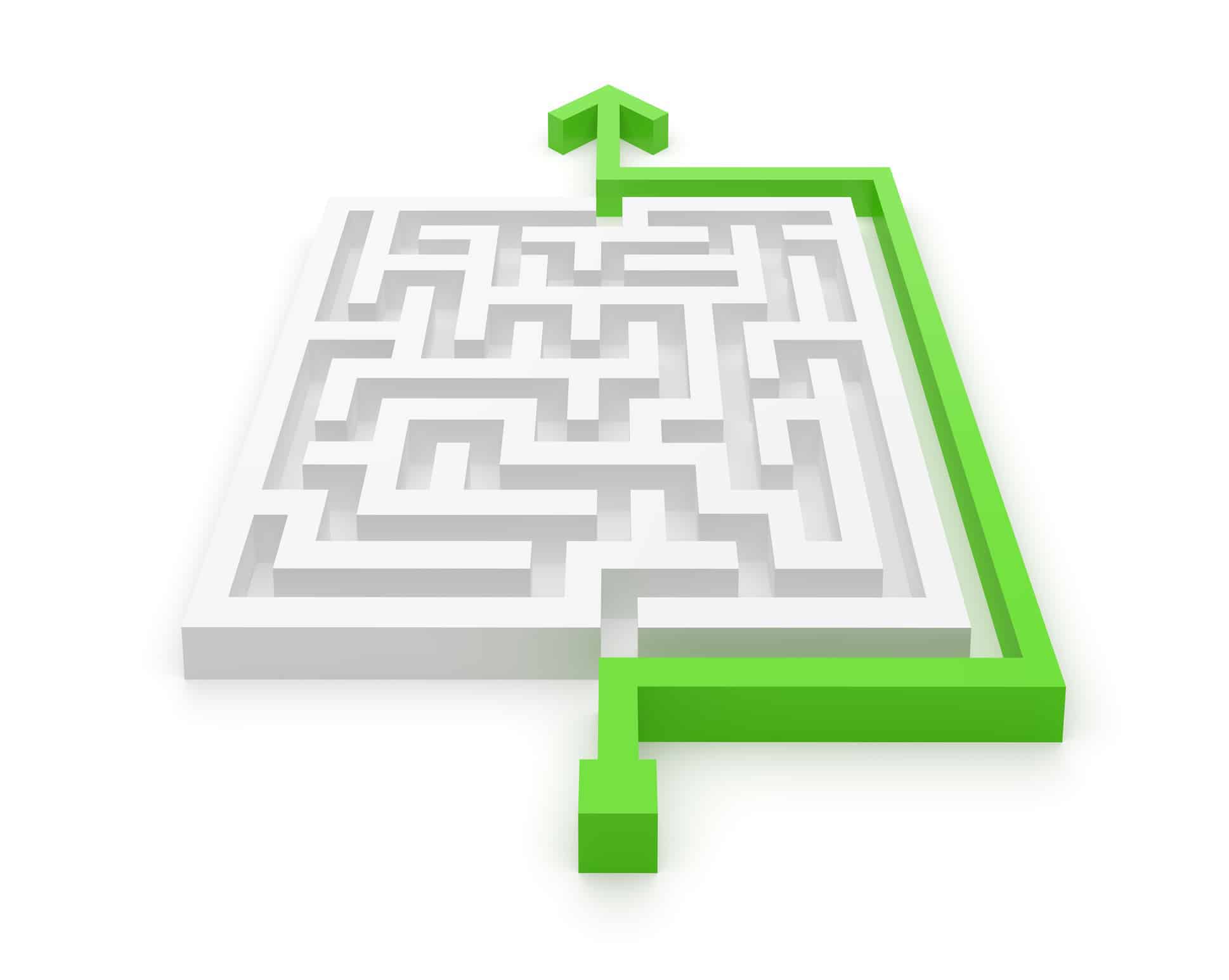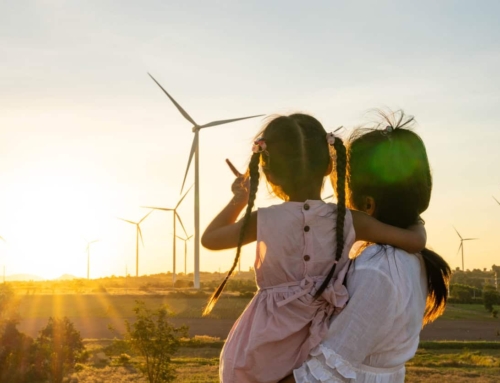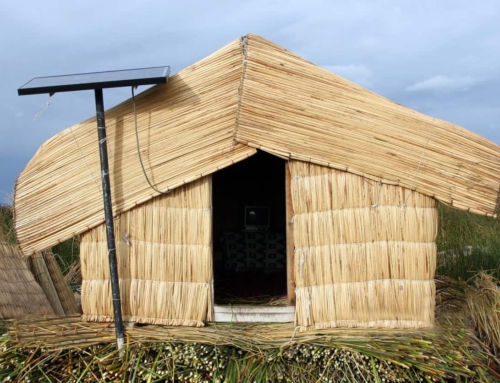I spend a lot of time around climate activists helping them with climate communications. Like most of us, their perceptions of where others are in their climate journey are based on where they are themselves. This is a common human characteristic. But if we want to move people to act on climate, do we need to take them through every stage of a climate journey? Do we have the time? Instead, what if we could just skip to the last stage of action?
Let’s take a typical personal journey. Most people who become active in the climate crisis start with a general awareness. They recognize it’s important, but so are other things in their lives such as graduating from school, getting a job, working, or raising kids. Or many of us may be in cognitive overload. Life gets in the way. Climate is just not a priority.
The first stage of the journey is a more acute awareness. Perhaps some event or observation causes us to become more aware… say your local drought, or extreme heat, watching, or thinking about your kid’s future. Suddenly, we take a deeper interest. It looks like climate may affect us or our children. It might be tempting to assume that climate disaster is a motivator for this first step, but it’s not. It’s more personal experience or stories from trusted friends. So at this point we start to do some more research.
As a result of our inquiries and research we develop a specific awareness which is followed shortly by foreboding and fear of what is happening with our climate. Many climate organizations use fear to capture attention. We are led to believe that, if we do nothing, our children will explode like potatoes in a microwave. Many climate organizations and climate communicators feel that we can scare people into action.
Al Gore’s Climate Reality organization is a classic example. In his 600 slide presentation on climate, 525 slides are on how we are all going to die from the climate crisis. 75 are more uplifting on potential solutions. The purpose of the organization is to proselytize all the bad things that will happen. It’s as if I can convince you with facts, reason and fear, then you will see the light, and take action. This doesn’t work, and hasn’t for the last 40 years.
People don’t like to be told what to do. And facts and reason have little to do with how we humans make decisions. As a result, the next stage is frustration, fatigue, apathy and disengagement. We can’t see how anything we can do can change the scope of the problem. Perhaps this is the addiction-anonymous equivalent of reaching rock bottom.
Many of my friends are at this stage. The science is solid, the models are good and have been accurate over the last 20-30 years on predictions. Any sane person would be depressed if they knew all those facts and reasons. So now most of us succumb to full-on crisis fatigue. We come to believe that the climate crisis is hopeless, and we are pretty much screwed because, well, we may be.
Hope is offered as a solution to those who suffer from the self-created problem of too much fear or despair. So the next phase we enter is searching for silver bullets like nuclear fusion, or solid state batteries, or resolving to live our lives as aesthetic monks. When we find that these are far in the future, or don’t work, or that as individuals we have very little impact, we either give up, or simply live in a perceived illusion that if we recycle, we are doing good. This is not to say that a silver bullet might not one day be found or that individual actions don’t have impact. We have all the solutions we need, and we need both collective and individual action.
For those who are still in the game, we may next find a particular solution on which to focus that works for us. The book Drawdown offers 100 of the most impactful solutions from educating girls to regenerative agriculture. It’s a great antidote to the hopelessness of the previous phase because it breaks the issue of climate into its component pieces and provides a roadmap.
Some of us then begin to focus on our solutions. We get involved in one of four levels of implementing these solutions: 1) On a personal level, 2) With our friends and family, 3) In our communities and 4) On a national level. For example, we can put solar on our own rooftops, we can help our friends do the same, we can help get community solar started, or we can lobby on the state and national level for sane solar policies. At this stage we may begin to feel some satisfaction. I like to say that the climate crisis won’t be solved in our lifetime, but over generations, with tens of millions of people working on tens of thousands of projects.
Another further stage is deciding to help with accelerators. These are anything that multiplies the adoption of solutions such as: finance, education, behavioral change, policy development, or communications.
But here’s the faulty assumption behind our attempts to get people to act on climate. We might believe that everyone needs to pass through each stage of a climate journey in order to get to a point where they will act. There is no evidence that this is necessary, and belief that it is required is slowing our progress. We don’t need to give people all the facts and reasons, educate everyone on every last catastrophic impact, or find the silver bullet, or pick the right solution, or make it so easy that they’ll just do it. People will find their own reasons and their own solutions. They will find their own paths on their own journeys.
Instead, we need to make people feel like they are part of something bigger than themselves. That by participating they will be better versions of themselves and will be recognized for their efforts as part of a group. This is called creating an identity. It requires invitation, inspiration of a better future, a great cause, and recognizing them for their actions. And there is no greater cause than helping each other.
Every climate communication must ask, are we creating identity? Are we inspiring? Are we providing examples by our actions? Or are we simply stuck dragging them through an unnecessary stage? People didn’t have to suffer directly to understand Dr. Martin Luther King Jr’s “I have a dream” speech. They didn’t need a litany of every infraction. They needed to imagine a better tomorrow.
Let’s help others imagine a better future. *
* PS: I could have just skipped to this point.
Hobie,
‘We are all connected. Savor the Earth!’™
L. Hobart Stocking
SkyWaterEarth.com
hobart@skywaterearth.com
651-357-0110
Facebook: @SkyWaterEarthConnected
Twitter: @SkyWaterEarth








Excellent!!! They lost me on all the climate science and endless booklets, articles, references, endless badgering, hectoring, join this, join that, help us make cloth grocery bags, march here, march there! When I let go of an acquaintance that buzzed around my head like a wasp, constantly jabbing with stinging blows, demanding attendance, response now, with a desperate times requiring desperate measures approach…the world slowed down. I could look around, make my own judgements, assess what I could do, wanted to do. I started by accepting my limitations and identifying what I was already doing. For example, I buy products locally. I have a veggie garden. I walk to my studio. I don’t travel for personal reasons, & cost. I treat my body well so I don’t need medical care very often. I have a small home. I recycle. I love being creative with found objects. I’ve reduced my needs. I reuse all the time. I’ve been doing these things anyway because they suit me. I write a nature column and other environmental oriented essays that are not hard sell but pleasant informative journeys through interesting nature situations. I share insights and odd questions on social media. My mental health has thus vastly improved and that’s all I can do. Your Post Comment button is telling me I have already commented. Nope! Hope you get this.
Thanks Dianne. What’s the name of your nature column? THe natural world is one of the five great narratives for telling stories about climate.
Love this article, but I think you meant “ascetic monks” – not “aesthetic monks”, altho being an artist I like the concept of aisthetic monks.